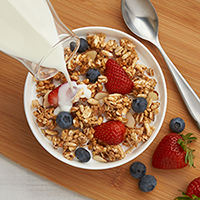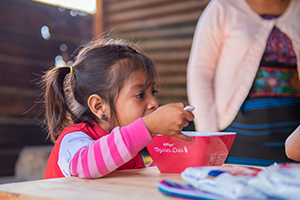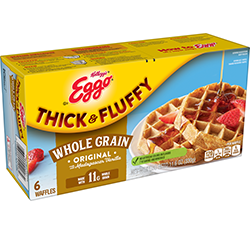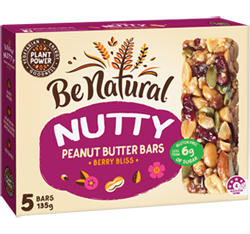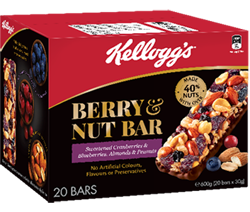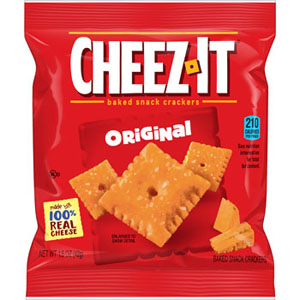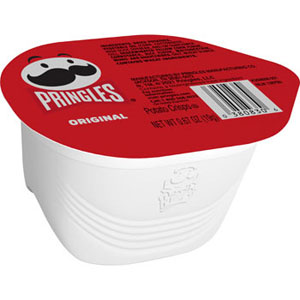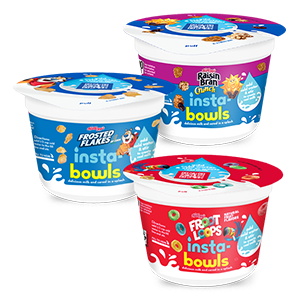
- About Us
- Wellbeing
- Hunger
- Sustainability
- ED&I
- People
- Reporting
Our Approach
Focusing on eating patterns
We believe that the best indicator of nutrition quality is to focus on what people actually eat – their dietary patterns. We understand that foods are rarely eaten alone and considering any one food or nutrient in isolation is not always the most helpful approach. Over the long term, this way of thinking can help people make healthier and more environmentally sustainable food choices. For example, cereal is an excellent food to deliver iron, B vitamins, vitamin D and fiber. Plus, as it is often eaten with milk and fruit, fiber, calcium and protein intakes also are boosted.
For Kellogg, nourishing foods are about the eating occasion, how much and how often you eat them as well as the foods you eat them with as much as how they provide delight and enjoyment. We believe the food experience must also encompass their convenience and affordability compared to other foods eaten at the same occasion.
We know that healthy eating patterns should not come at the expense of a healthy planet. It is clear that animal-based foods have higher impacts on the environment including carbon emissions, land and water use. We must encourage dietary shifts toward grains and other plant-based foods to feed the world in a more sustainable and healthful manner.
Maximizing nutrients of need
Our approach at Kellogg is based on a firm belief that all foods have a place in the diet. Our Kellogg Global Nutrition Criteria (KGNC), used to inform food design and formulation, is based on nutrition science and public health dietary recommendations. KGNC establishes a specific set of assessment criteria for each food category and recognizes the roles different categories typically play in the overall diet.
As science advances and people’s needs change, we continue to look for innovative ways to enhance the nutrition profile of our foods while maintaining taste and performance.
- Micronutrients to address hidden hunger - Kellogg delivers foods across our portfolio to address “hidden hunger,” or micronutrient deficiencies that affect at least 2 billion people globally.1
Micronutrients are vitamins and minerals needed by the body in very small amounts, including iron, Vitamin D and B vitamins; however, their impact on a body’s health is critical. Deficiencies can cause severe and even life-threatening conditions. Kellogg recognizes that micronutrient addition plays a vital role in achieving optimal health for all the family and has been voluntarily adding vitamins and minerals to our grain-based foods for over 80 years.
For example, in January 2023, the U.S. Food and Drug Administration (FDA) announced increases to the fortification levels of Vitamin D allowed within the cereal category and new allowances of fortification in grain-based bars. This announcement followed a petition from Kellogg after seeing an opportunity to help improve public health through food, as more than 90% of Americans do not consume enough Vitamin D.2 We are committed to utilizing both ingredients and fortification to provide delicious, affordable and accessible options to help U.S. consumers increase Vitamin D in their diet.
- More fiber to close the gap - According to the U.S. Dietary Guidelines for Americans, diets low in dietary fiber may impact the risk of certain diseases. Yet almost everyone in the U.S. – an estimated 90% of people – fails to eat enough of this important nutrient2. At Kellogg, we’re committed to helping close this fiber gap by innovating foods that provide fiber to help people consume more fiber in an affordable and delicious way.
- Sustainable Protein - By 2050, the global population is expected to increase to more than 9 billion.3 The food supply will need to more than double in a sustainable manner to feed people without further depleting the planet.4 The challenges of feeding our growing population must focus on how the world eats protein. An animal-first food system simply can’t meet this challenge. Studies show that cereal grains are a much more efficient source of protein when it comes to energy use and greenhouse gas emissions compared to animal sources.5 We understand the central role that sustainable protein will play in this transition and are focused on delivering the right sources, quality and frequency to people across the day.
Minimizing nutrients of concern
We are committed to delivering smart choices across our portfolio, including options with less sugar, sodium and saturated fat by the end of 2030, building on our achievements to date.
- Sodium - Kellogg has a strong history of action in sodium reduction. Our sodium reduction program began in 1998 and continues to this day. Since 2007, we have lowered the average sodium content of our breakfast cereals significantly and we continue to work toward the targets agreed by the International Food and Beverage Alliance by 2025.
- Sugar - According to the Dietary Guidelines for Americans, people’s sugar intake primarily comes from sugar-sweetened beverages (24%), desserts and sweet snacks (19%), coffee and tea (11%) and candy (9%).3 Breakfast cereals are relatively minor contributors to sugar intake. According to the U.S. Dietary Guidelines for Americans, breakfast cereals contribute approximately less than 5% of added sugar eaten by adults and children6, but we understand that we must design our foods to support public health priorities. Since 2011, we’ve lowered our Kellogg Global Nutrition Criteria for sugar by 12.5% and we regularly review the levels of sugar in our foods to ensure we are delivering on consumer expectations. Today 86% of our cereals meet our Kellogg Global Nutrient Criteria for sugar.
- Saturated fat - Grains and other plant-based foods are typically low in saturated fat and minimal contributors to saturated fat in the diet. For our savory snacking foods, we use various tools, including baking and optimizing our blends of plant-based oils, to ensure saturated fats levels are managed appropriately. Kellogg has adopted the International Food and Beverage Alliance (IFBA) commitment of not using any partially hydrogenated oil as an ingredient in its recipes and applying a maximum of industrial trans-fatty acids in the final products of 2 milligrams/100 grams oil. We have delivered against this commitment, removing industrial trans-fat from the very few recipes in which they existed.
Following is our global progress to date in maximizing nutrients of need and minimizing nutrients of concern:
| Kellogg Global Nutrition Criteria | |||||||
|---|---|---|---|---|---|---|---|
| Full Portfolio | Breakfast Cereal | Savory Snacks | Bars and biscuits | Plant-Based Meat Alternatives | Noodles | Frozen Breakfast | |
| % Foods meeting KGNC |
55 |
73 |
36 |
34 |
89 |
56 |
87 |
| % Foods meeting KGNC for sugar |
86 |
88 |
95 |
75 |
95 |
100 |
97 |
| % Foods meeting KGNC for saturated fat |
85 |
93 |
88 |
71 |
100 |
100 |
94 |
| % Foods meeting KGNC for sodium |
93 |
99 |
77 |
94 |
97 |
100 |
99 |
| % Foods free from industrial trans fat |
100 |
100 |
100 |
100 |
100 |
100 |
100 |
| % Foods containing at least a good source of fiber (per CODEX) |
58 |
75 |
35 |
53 |
86 |
33 |
27 |
| % Foods containing at least a good source of fiber (per regional regulations) |
38 |
59 |
14 |
25 |
64 |
33 |
25 |
| % Foods containing at least a good source of protein (per CODEX) |
73 |
89 |
68 |
51 |
96 |
56 |
66 |
| % Foods containing at least a good source of protein (per regional regulations) |
21 |
34 |
0 |
13 |
76 |
0 |
3 |
| % Foods containing at least a good source of one or more micronutrients |
46 |
78 |
n/a |
30 |
n/a |
56 |
83 |
| % Foods containing at least a good source of Vitamin D |
|
44 |
n/a |
n/a |
n/a |
n/a |
n/a |
| % Foods containing at least a good source of iron |
|
81 |
n/a |
n/a |
n/a |
n/a |
n/a |
| % of Foods containing at least a good source of folic acid |
|
65 |
n/a |
n/a |
n/a |
n/a |
n/a |
Ensuring access to affordable nutrition
Kellogg Company’s portfolio is more than 90% plant-based and includes cereals, snacks and veggie foods, which are often affordable, accessible options.
Cereal, especially, serves as both an accessible and affordable meal for families on a budget. In the U.S., a serving of Kellogg cereal with milk and fruit costs less than $1 (as of January 2023).7 In Mexico, families can get the nutrition benefits of a serving of cereal and milk for 16.5 pesos, or about USD $0.90 (as of February 2023).8
We also know it’s imperative to make our foods accessible to all communities. In addition to donating millions of meals to food banks on six continents through our Kellogg’s Better Days® Promise, we engage with government stakeholders on a broad array of nutrition assistance programs that feed families in need. For example, we make food that qualifies for the U.S. Supplemental Nutrition Assistance Program (SNAP), and the Special Supplemental Nutrition Program for Women, Infants & Children (WIC). SNAP overall, fed over 41 million people in 20199, and WIC provided more than 4.7 million women and children cereal benefits in 2021.10 We also support programs that feed children, like breakfast clubs in 27 countries and the U.S. national school breakfast and lunch programs, plus summer meals and more.
Transparently sharing information so people can make the right choices for themselves and their families
Our commitment is to be clear on the nutrition our foods provide and the role they play in healthy and sustainable dietary patterns. We understand that people want clear and concise information about the foods they are eating so they can make the best choice for themselves and their family. We recognize that clear nutrition labeling can enable people to make healthier and more sustainable choices.
Kellogg was one of the first companies to place nutrition information on our foods in the early 1900s. We further pioneered Guideline Daily Amounts in the early 2000s to ensure that people would have information on calories, sugar, sodium and other nutrients in our foods in an accessible form. We believe that providing people with clear information and guidance can help them make more informed choices. We design our food labels to provide all information in accordance with local laws and regulations and comply with the Codex Alimentarius principles of labeling.
This transparent approach and our belief that more information about our foods is good for people’s overall wellbeing continues today. For example:
- 100% of our foods carry nutrition labelling, as required by law and voluntary where not required.
- Kellogg has shown its commitment to meaningful Front of Pack labels through our use of the Facts Up Front program in the U.S., Traffic Lights labels in the U.K., Health Star Rating in Australia and NutriScore in France. Kellogg is committed to Front of Pack labeling and currently, over 90% of our foods carry front of pack nutrition labeling, as required by law and voluntary where not required.
- Ensuring that we increase the accurate portrayal of women and girls in advertising and media is an important part of our diversity and inclusion and U.N. SDG #5 – Gender Equality priorities. In the U.S., we are a member of the Association of National Advertisers (ANA) Alliance for Family Entertainment #SeeHer movement. As participants, our advertising and other marketing work is evaluated against a Gender Equity Measure (GEM) that determines how prominently we feature women.
Portion sizes
By offering a variety of foods in portion-controlled sizes, our quality and great-tasting foods are more affordable and accessible, while also helping consumers manage their calorie intakes. In the U.S., Kellogg has more than 120 single-serve options. We are aware that we must balance our growth in portion control foods with our commitment to reducing waste and plastic packaging. We continue to invest in optimizing and reducing packaging.
[1] Food and Agriculture Organization (FAO) 2013
[2] https://www.dietaryguidelines.gov/sites/default/files/2021-03/Dietary_Guidelines_for_Americans-2020-2025.pdf
[3] https://www.wri.org/insights/how-sustainably-feed-10-billion-people-2050-21-charts
[4] https://www.dietaryguidelines.gov/sites/default/files/2021-03/Dietary_Guidelines_for_Americans-2020-2025.pdf
[5] Kaisa S Poutanen, Anna O Kårlund, Carlos Gómez-Gallego, Daniel P Johansson, Nathalie M Scheers, Ingela M Marklinder, Anne K Eriksen, Pia C Silventoinen, Emilia Nordlund, Nesli Sozer, Kati J Hanhineva, Marjukka Kolehmainen, Rikard Landberg, Grains – a major source of sustainable protein for health, Nutrition Reviews, Volume 80, Issue 6, June 2022, Pages 1648–1663, https://doi.org/10.1093/nutrit/nuab084
[6] Lee SH, Zhao L, Park S, Moore LV, Hamner HC, Galuska DA, Blanck HM. High Added Sugars Intake among US Adults: Characteristics, Eating Occasions, and Top Sources, 2015-2018. Nutrients. 2023 Jan 4;15(2):265. doi: 10.3390/nu15020265. PMID: 36678136; PMCID: PMC9867287.
[7] Based on the average cost of a serving of Kellogg’s cereal products with more than 4 servings per container, ¾ cup milk, and 2oz of bananas, apples and strawberries (Nielsen: 52 WE, January 21, 2023).
[8] Based on average cost of serving of Kellogg’s 30-gram cereal and 240 ml of milk, according to the Mexican System of Food Equivalents (SMAE), as of February 2023
[9] https://www.fns.usda.gov/pd/supplemental-nutrition-assistance-program-snap
[10] https://www.fns.usda.gov/pd/wic-program




